|
Willys-Overland War
Production Record
Willys-Overland Plant Photos
Willy Jeep
Willys-Overland Motors in World War Two
Toledo, OH
1903-1952
(Willys-Overland ceased as a company in 1952, but the Jeep has remained
and has been built by several companies in Toledo.)
Rest in Peace
This page last updated 3-11-2025.
Willys-Overland is best known for
its Jeep. It continues to be produced today in Toledo, OH, although in
a
newer plant than the one used during World War Two. Over the years since the
Second World War, the owners of the Jeep name have
changed several times. However, if one looks at the photos below
and in the War Production Record above, it becomes very obvious that Willys-Overland
had a very diverse product line beyond the Jeep. In fact, as shown
below, it was one of the four US automakers during World War Two
to make airframes. But what was special about the Willys-built
airframe is that it was the United States' first cruise missile.
How many Willys-Overland Jeeps were
built? We have included official Willys-Overland photos and
documents from the World War Two era, and they do not agree. Below one can
note that 1,557 MA models and 359,849 MBs were built for a total of
361,406 Jeeps. Looking at page two of the "Willys-Overland War
Production Record" linked at the top of this page, the quantity of
353,941 is reported, but we assume that to be a typo and should have been
358,941. Then on page 3 of the same document, the quantity of 358,941 is reported. However, if one
actually adds up the numbers, it comes out to 359,941. It appears that
the fire trucks for the Navy were subtracted, as they were not Jeeps.
Only the Jeep chassis were used. To add to the confusion, Table 1
shows that Army Ordnance only accepted 350,349.
It should be noted that body
production was outsourced and was built in Connersville, IN. The
Jeep engine and final assembly were done in Toledo. Based on 359, 941, the average
cost of a Willys MA/MB Jeep and fire truck was $1,291.78 in World War Two dollars.
As noted above and can be seen from the
information below, Willys-Overland produced a whole plethora of war
goods besides Jeeps for the US Military. Total wartime sales for
the company were $734,148,706
for the 19 major projects it undertook. At peak production, the
company employed 15,000 workers and was turning out a Jeep
every two minutes. All of the production was at one plant
complex on Central Avenue in Toledo.
Normally histories on the US Auto
Industry during World War Two are Detroit-centric and forget Willys-Overland down to
the south, just across the Ohio-Michigan state line. Hopefully,
this page provides a full accounting and credit for what Willys did
during World War Two.
Willys-Overland in
World War One:
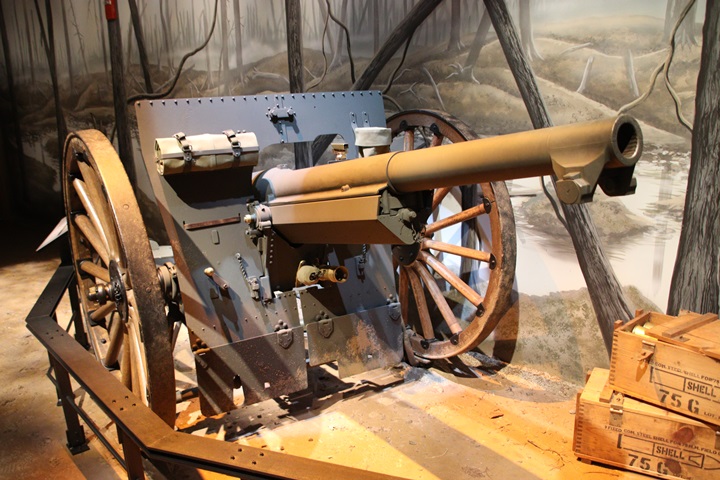
There were 1,500 French 1897 75mm field guns built under license in
the United States. Willys-Overland built many or all
of the gun carriages for this weapon. Author's photo added
1-2-2022.
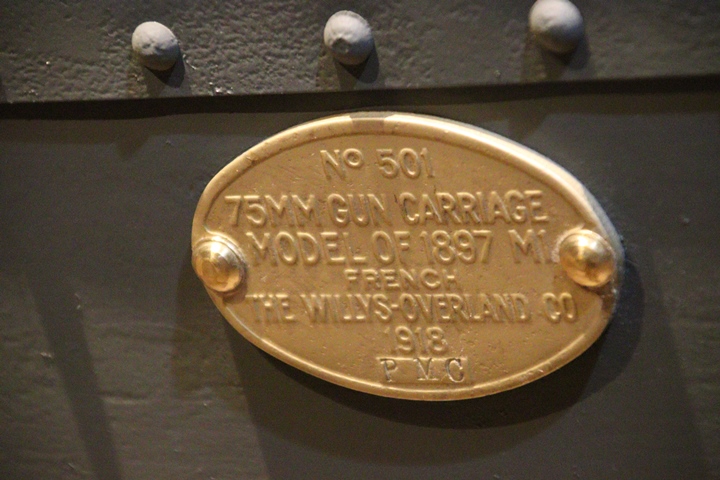
This carriage is on display at the
National Museum of the USMC, which is serial number 501. Author's photo
added 1-2-2022.
Editor's note: None of what
is shown here would have been available without the help of Jeep Historian Emeritus Ron
Szymanski of Toledo, OH.
Mr. Szymanski is the former Curator of the Jeep Museum and is a virtual
encyclopedia of information on the entire history of the company and
product line. He voluntarily spent an entire day with me in January 2012,
providing information and photos that make this history of Willys-Overland
in World War Two so complete.
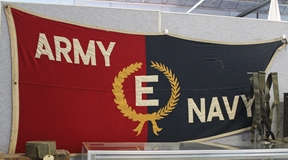
Willys-Overland won the Army-Navy "E" two
times during World War Two.
Willys-Overland World War
Two Products:
The company had $609,498,000 in major contracts during World War
Two. These contracts included the following products: 358,941 Model MA and MB
Jeeps, 15 MT Tugs, 4,344,160 155mm shells, 3,374 Breech Housings and Recoil
Cylinders for 1.1 inch anti-aircraft guns, 78,735 1/4 and 1 Ton Cargo Trailers, 415 Powder and
Projectile Hoists for US Navy ships, 253,072,519 40mm Primers and Parts, 2,000,460
20mm Shells, 6,096 Grumman F6F Landing Gears, 849 Carburetor Air
Scoops for Curtiss-Wright (Unknown type aircraft.), 3,605 C-46 Wing
Fuel Tanks, 37,500 Bomb Cluster Shipping Bands, 1,087,277,247 .30
and .50 bullet cores, 3,731 Vought F4U Wing Center Sections, 1,292
JB-2 Airframes.
Table 1 -
Willys-Overland World War Two Vehicles
Accepted by Detroit Ordnance, US Army
The information below comes from "Summary Report of
Acceptances, Tank-Automotive Material, 1940-1945."
Published by Army Services Forces, Office, Chief of
Ordnance-Detroit, Production Division, Requirements and
Progress Branch
January 21, 1946. |
|
Type |
1940 |
1941 |
1942 |
1943 |
1944 |
1945 |
Total |
| Truck, 1/4-ton,
4x4, Command |
|
9,129 |
83,739 |
91,955 |
108,806 |
56,720 |
350,349 |
| Truck, 3/4-ton,
6x6, Tractor |
|
|
|
15 |
|
|
15 |
| Trailer, 1/4-ton,
2-Wheel, Cargo |
|
|
16,527 |
34,037 |
9,392 |
|
59,956 |
| Trailer, 1/4-ton,
2-Wheel, Flat Bed |
|
|
3 |
|
|
|
3 |
| Trailer, 1-ton,
2-Wheel, Cargo |
|
|
|
9,502 |
5,274 |
|
14,776 |
|
Total |
|
9,129 |
100,269 |
135,509 |
123,472 |
56,720 |
425,099 |
Author's Note
and Disclaimer: The Detroit Office
of Ordnance of the U.S. Army was the primary purchasing entity for vehicles for the U.S. Army during WWII. It also purchased
vehicles for the USMC, US Navy, and for Lend-Lease. However,
there were other organizations that also purchased vehicles
including the Army Corps of Engineers, U.S. Army Air Force, U.S.
Army Signal Corps, Navy Bureau of Ordnance, Navy
Bureau of Aeronautics, and foreign countries making direct
purchases. In this case it is known that the Signal Corps
ordered its own trailers from Checker, and they are not comprehended in
the numbers above.
The Willys-Overland MT-Tug:
Army Ordnance describes this vehicle in the above table as the Truck, 3/4-ton,
6x6, Tractor. Willys-Overland described it as the MT-Tug,
as shown on the data plate below. Of the fifteen that were
produced in 1943, there appears to be three still in existence.
This is not a bad percentage for a World War Two vehicle. One of
the survivors is Serial Number 6, which is located at the Sam Werner
Military Museum in Monteagle, TN. While not restored, it is
original, with the data plate still attached to the vehicle. Some
collectors have been known to modify a standard jeep into the 6x6
configuration. This is the real deal at the Sam Werner Military
Museum.
The U.S. Army tested them and decided it
did not want it. However, the Army Air Force took the vehicles
and used them to tow aircraft at its airfields.
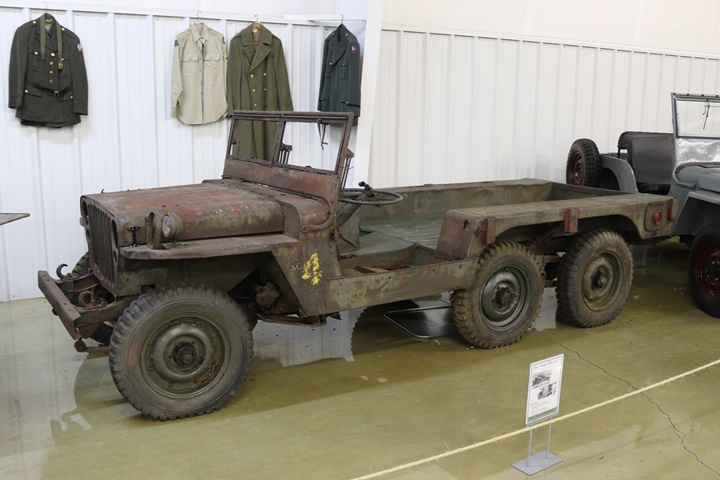
Photo added
7-29-2019.
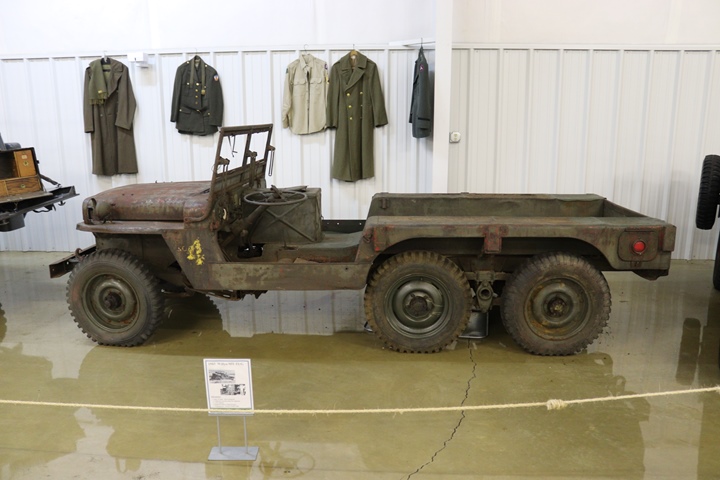
One feature of the Willys-Overland MT Tug is
that the steering wheel folds down parallel to the top of the vehicle.
This was a design feature so the units could be stacked for shipping.
After the windshield is folded down, the tires removed and stored
in the bed of the tub, the vehicles could be stacked one on top of
another for efficient shipping overseas. Photo added 7-29-2019.
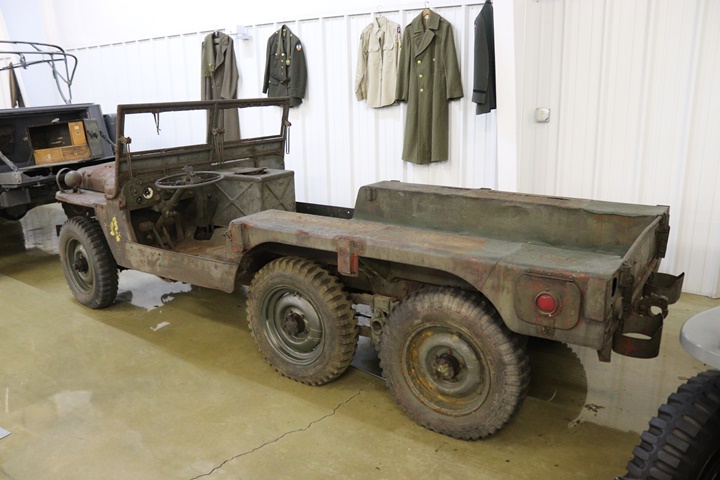
The gas tank is located next to the driver.
While this may have aided shipping by not being under the vehicle,
this location is not the best location for it. Photo added 7-29-2019.
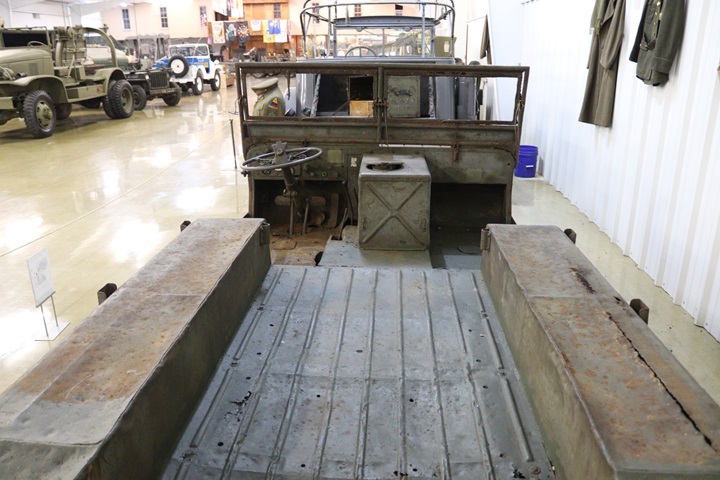
Photo added 7-29-2019.
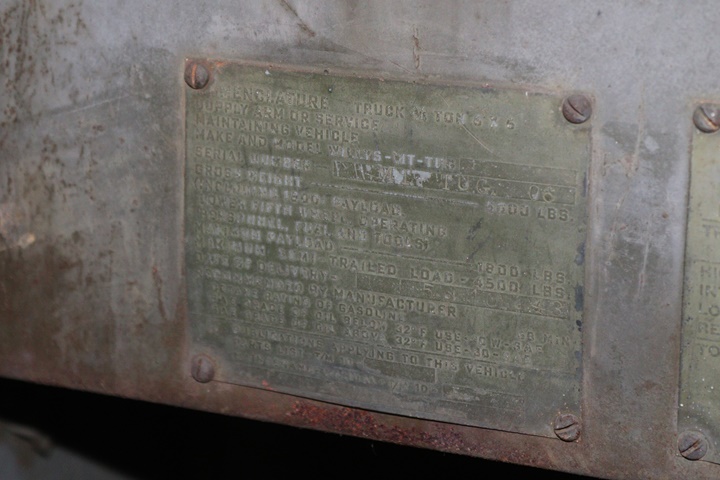
The data plate. MT Tug Serial Number
06. Photo added 7-29-2019.
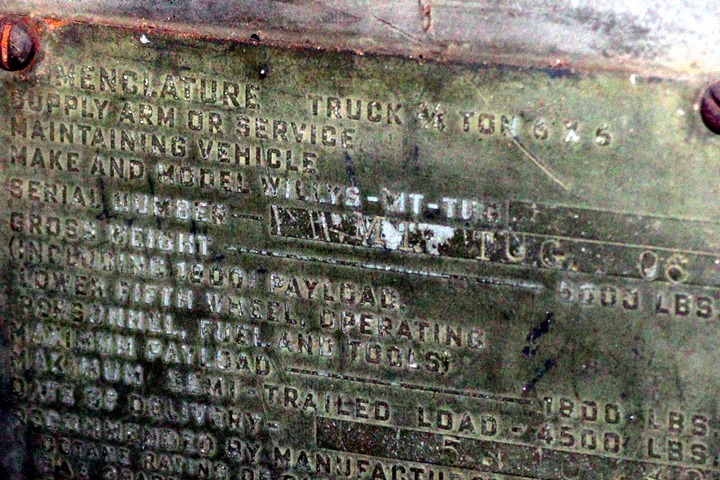
This auto level color version of the data
plate highlights the nomenclature of the vehicle. Photo added
3-11-2025.
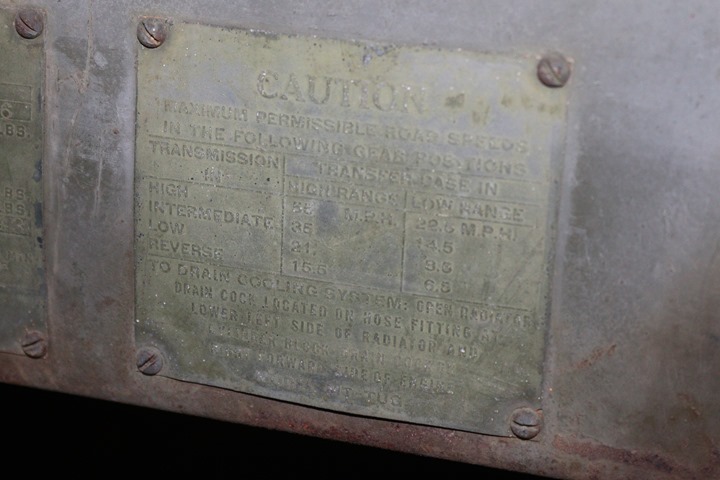
Photo added 7-29-2019.
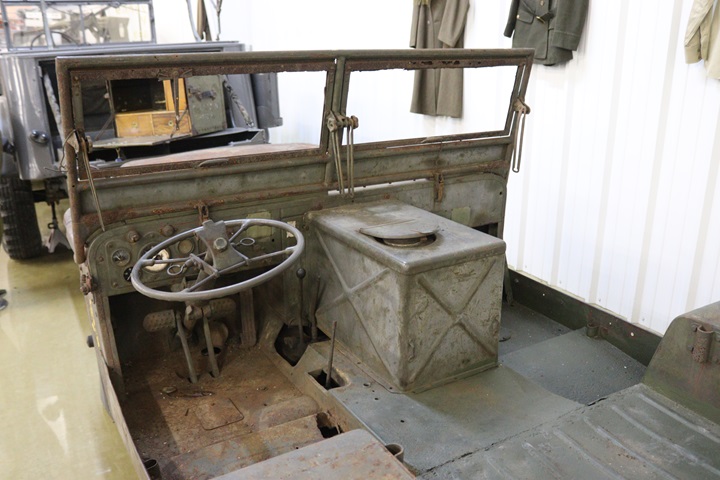
Photo added 7-29-2019.
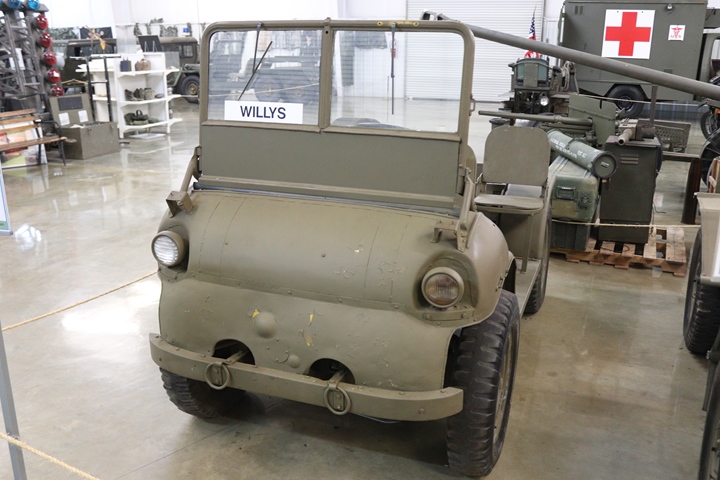
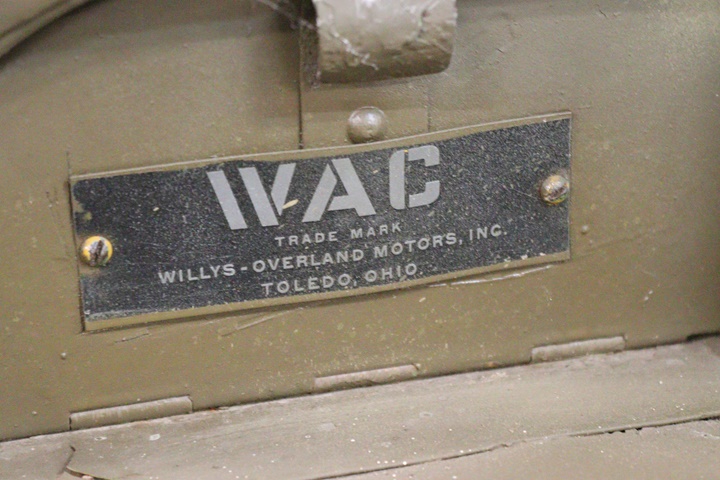
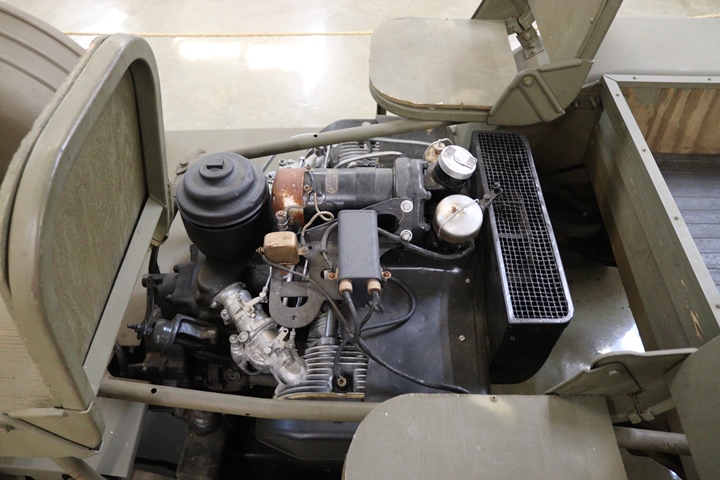
During World War Two, Willys-Overland
was the third largest producer of aluminum forgings in the United States totaling
29 million pounds.
It also produced steel
forgings, not only for its in-house products but on a subcontract basis
also. See the accompanying "Willys-Overland War Production Record"
for the complete list of parts.
The accompanying
"Willys-Overland War Production Record" linked above is a ten-page
typed primary source document from the end of the war that not only gives the
production numbers, but more detailed information on product usage and
production dates.
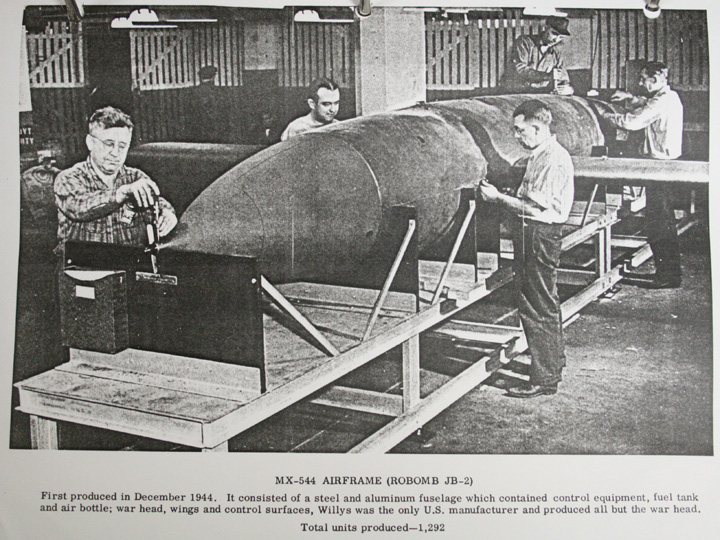
It was a total and unexpected surprise when Willys/Jeep Historian Ron
Szymanski showed me this photo in January of 2012. I had not
even imagined that Willys-Overland was responsible for the manufacture
of the JB-2 Loon, which was the first cruise missile and very high tech
for its time. It was also the American reverse engineered copy of
the German V-1 "Buzz Bomb". As noted above, Willys was the only
manufacturer of the 1,292 produced.
The 1,292 Willys-Overland JB-2 Loons were being produced
for use in the planned invasion of Japan. Republic Aircraft had the
contract for the airframe and Ford built the engine. However, Willys-Overland
was subcontracted to build the airframe after Republic built ten
prototypes. But Republic was still in full
production of the P-47 Thunderbolt and did not have the capacity to
manufacture it in high volume. This one and only
photo above shows a JB-2 being assembled in the Toledo Willys-Overland
plant. Photo courtesy of Ron Szymanski.
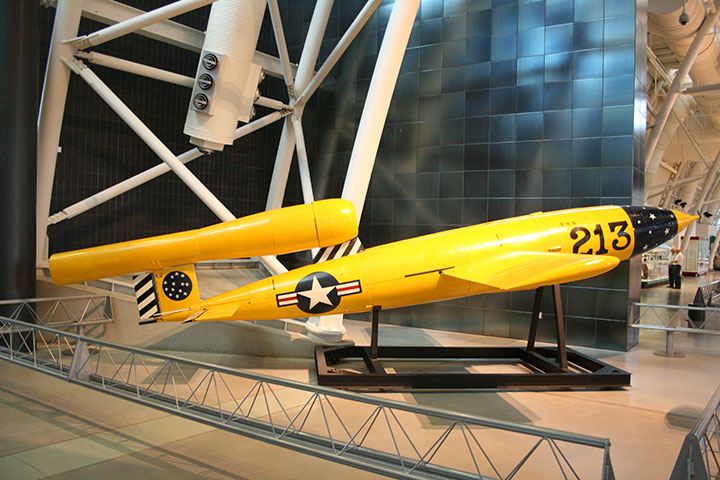
This is the final product after Republic
added the Ford-built engine. This Willys-built JB-2 can be seen on
display at The Udvar-Hazy Center
in Chantilly, Virginia, which is part of the National Air and Space
Museum. When I took this photo in 2011, I was still unaware that Willys built
it. One of the best kept secrets
of World War Two, intentionally or
unintentionally, is of Willys' contribution to the war effort.
Author's Photo.
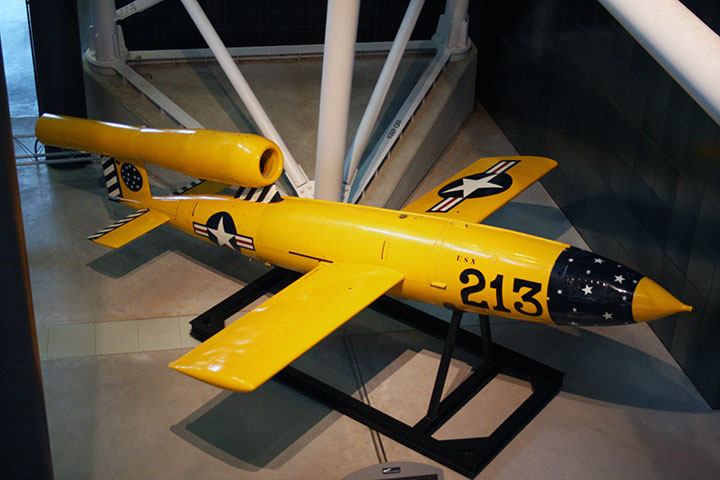
There are 11 other Willys-Overland-built
JB-2 Loons on display around the world. One is outside of the United
States Museum of Transport and Technology, Auckland, New Zealand.
Those residing in the US can be seen at: National Museum of the
United States Air Force, Dayton, Ohio (This is painted as a German V-1
"Buzz Bomb".); US Air Force Armament Museum at Eglin AFB; FL, Evergreen
Aviation and Space Museum, McMinnville, Oregon; Museum of Alaska
Transportation and Industry in Wasilla, Alaska; Hill Aerospace Museum,
Hill AFB, Utah; Point Mugu Missile Park, NAS Point Mugu, CA; Cradle of
Aviation Museum, Garden City, NY; Milford Township Park at Milford, IL;
American Legion post in Wheaton, MN; White Sands Missile Range Museum,
NM. Author's Photo.
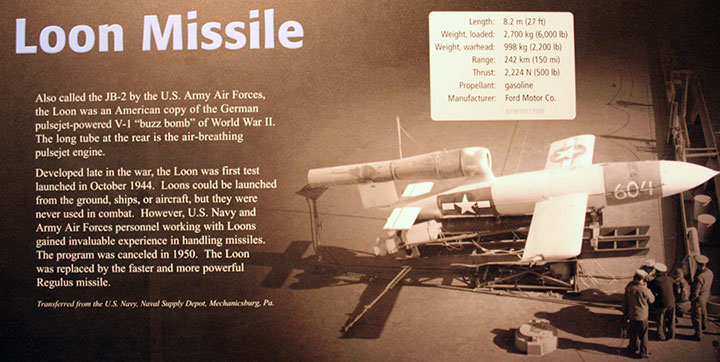
Even the curators at the Air and Space
Museum make mistakes, as shown here on the information plaque.
Note that Ford, not Republic, gets credit for being the manufacturer
while it only built the engine. There is no mention of Willys-Overland at
all. Actually, it should be called Republic/Ford/Willys-Overland
JB-2 Loon.
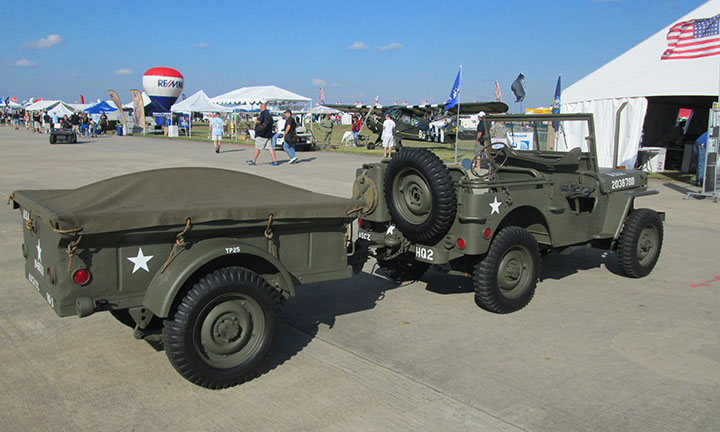
The jeep is the Willys-Overland signature product line
for the Second World War. This is a Jeep with a 1/4-ton trailer as seen at
the 2013 Wings over Houston Airshow. Author's Photo.
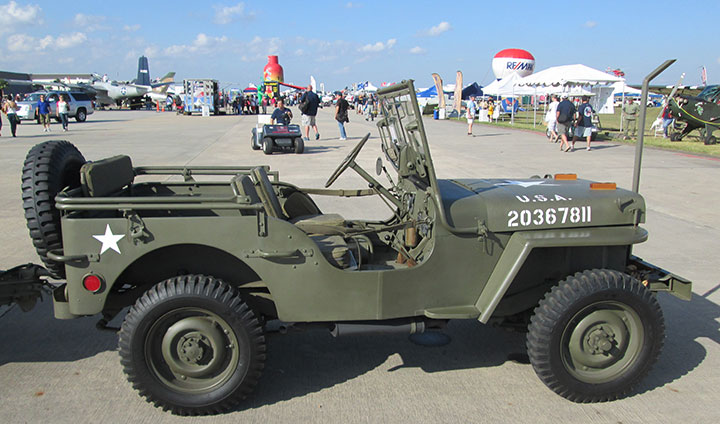
Author's Photo.
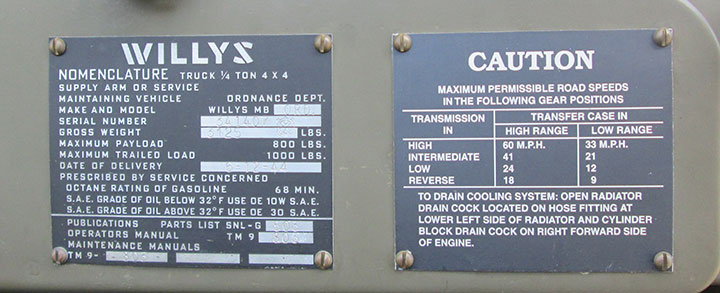
This Willys Jeep came off the Toledo, OH
assembly line on June 12, 1944. It is serial number 341407.
Author's Photo.
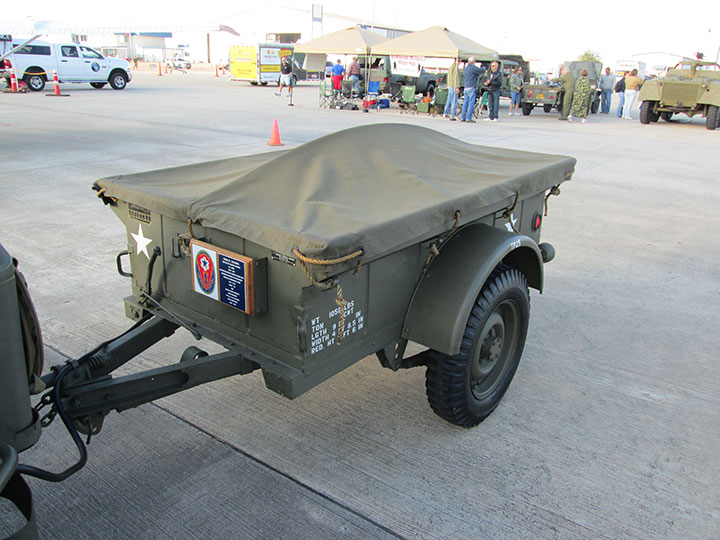
Author's Photo.
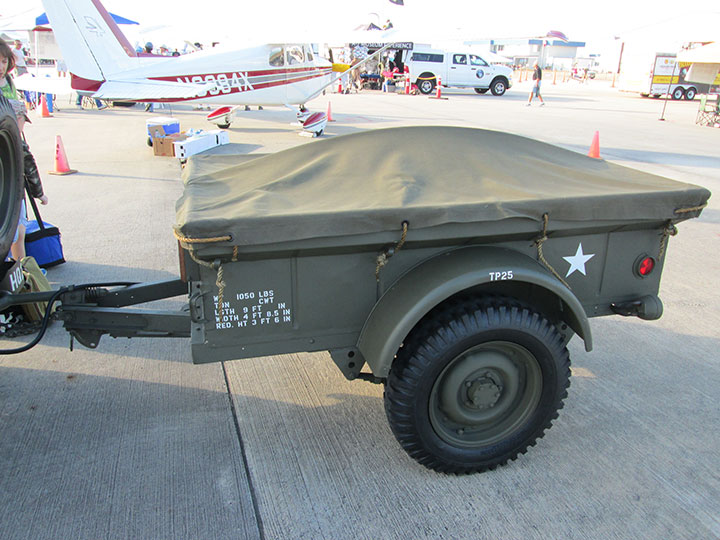
Author's Photo.
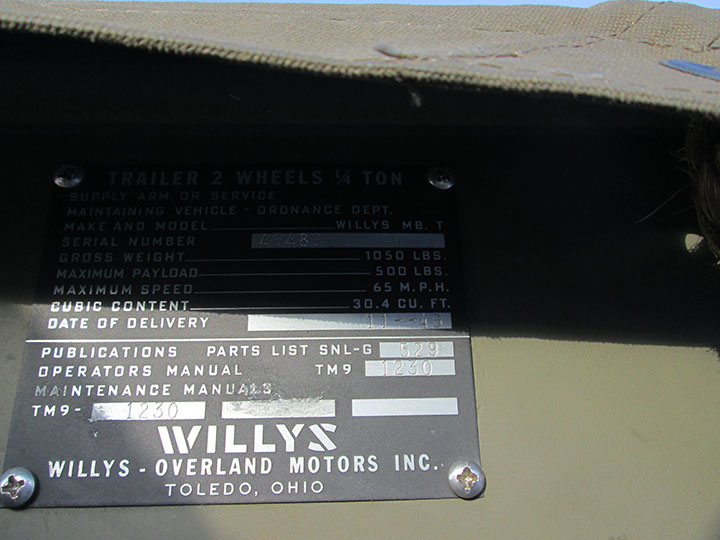
The trailer is serial number 46489 and it
was built in November 1943. Author's Photo.
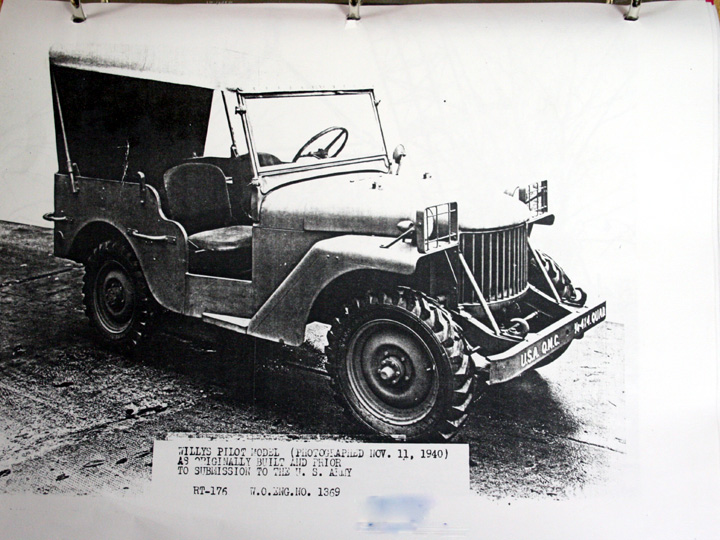
The original Willy's Jeep.
Photo courtesy of Ron Szymanski.
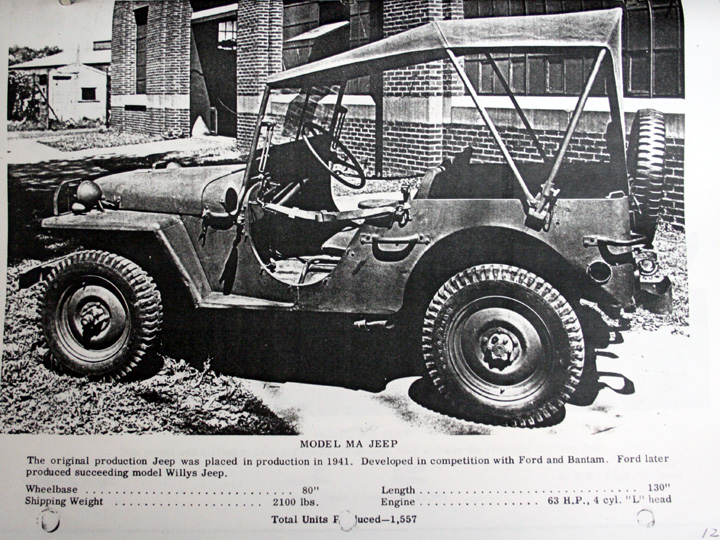
Photo courtesy of Ron Szymanski.
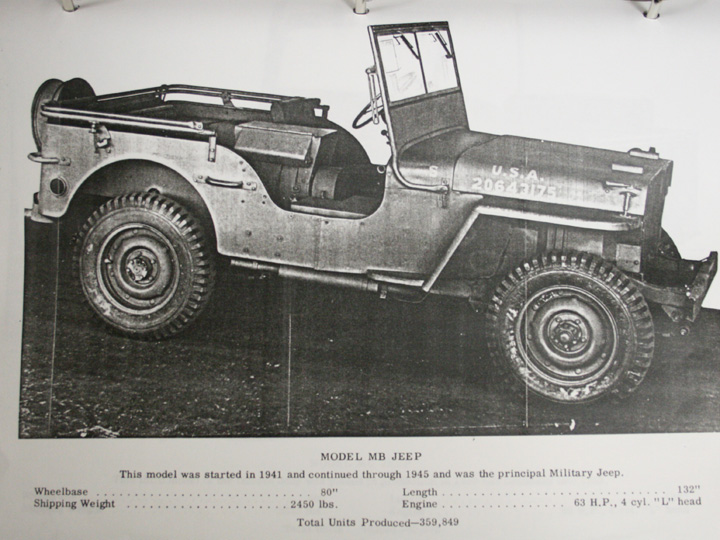
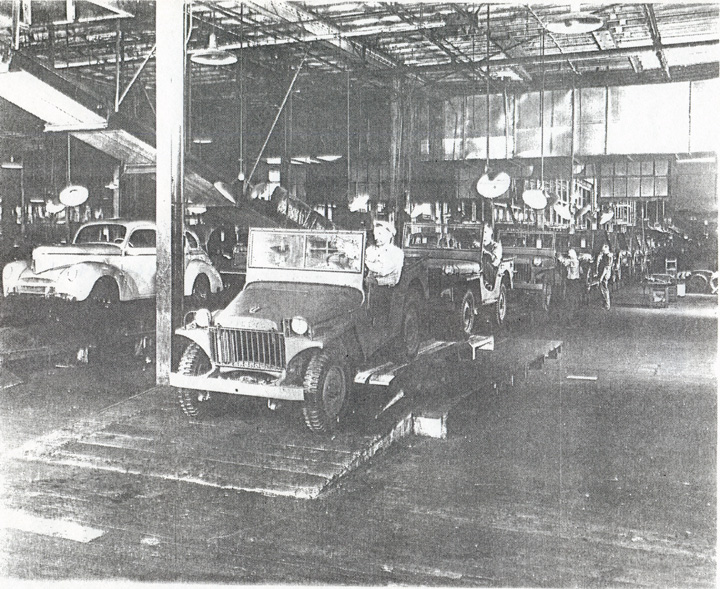
The next two photos are post-November 1940, when the US government
ordered 1,500 Jeeps from Willys but before February 1942, when all car
production stopped in the United States. The automobiles pictured
here
are the Willys-Overland Americar. Photo courtesy of Ron Szymanski.
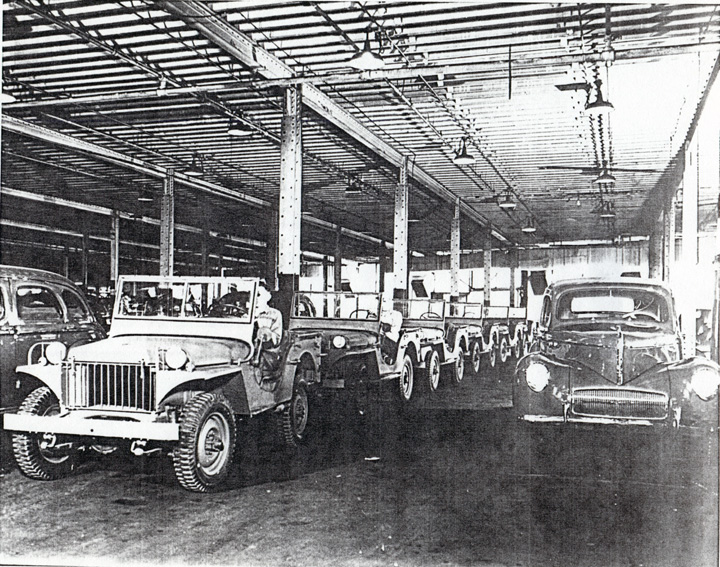
These are the first of 358,941 MA and MB Jeeps built by Willys during World
War Two. Photo courtesy of Ron Szymanski.
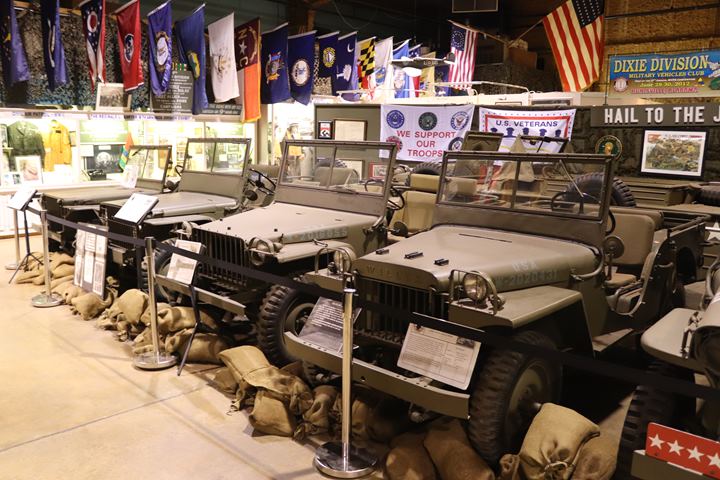
Four early jeeps by three different
manufacturers are on display at the U.S. Veterans Memorial Museum in
Huntsville, AL. From farthest to closest are a Ford prototype
jeep, a 1941 Ford GP, a 1941 Bantam BRC 40, and a 1941 Willy Model MA.
It is one of 1,500 MAs that were produced for testing. Author's
photo added 5-8-2020.
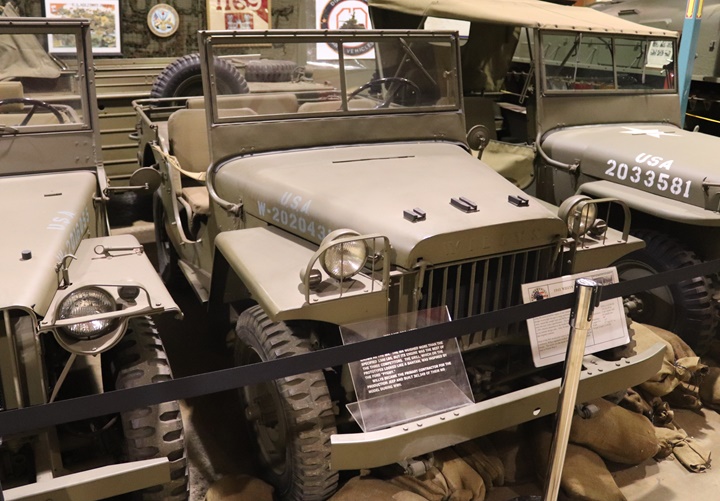
Author's photo added 5-8-2020.
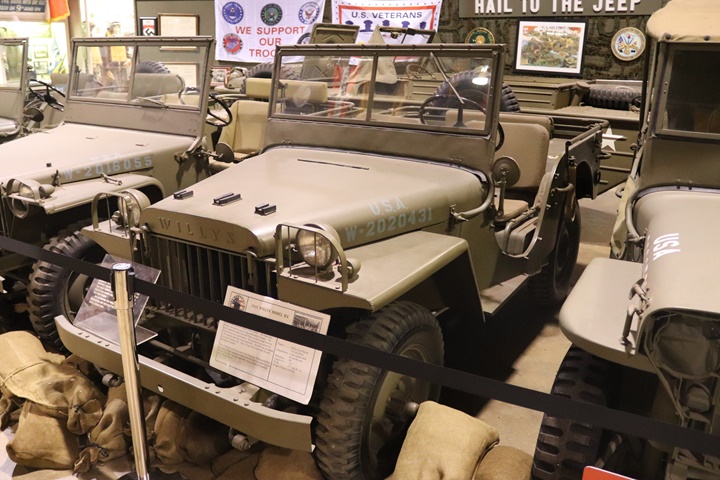
Author's photo added 5-8-2020.
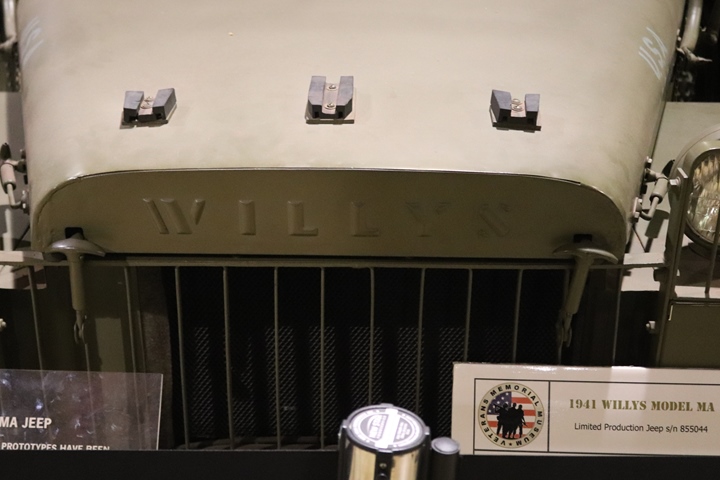
This MA is serial number 855044. Most
of the MA jeeps were sent to Russia after testing. The improved MB
became the production version of the Willys-Overland jeep.
Author's photo added 5-8-2020.
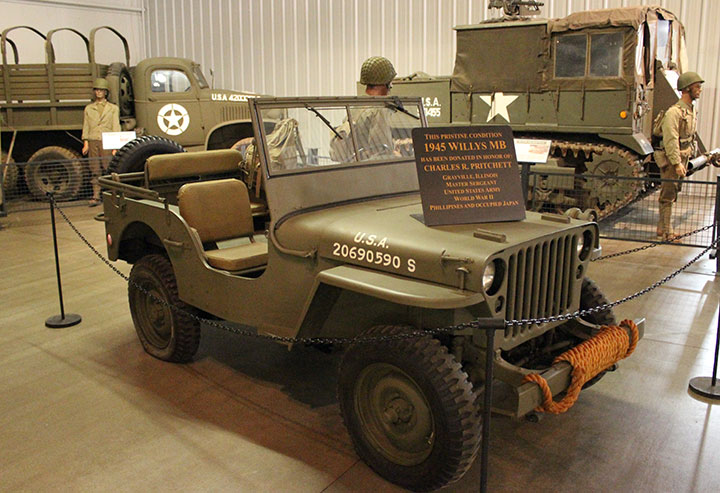
Here is a 1945 Willys MB Jeep at the
National Military History Center in Auburn, IN. Author's Photo.
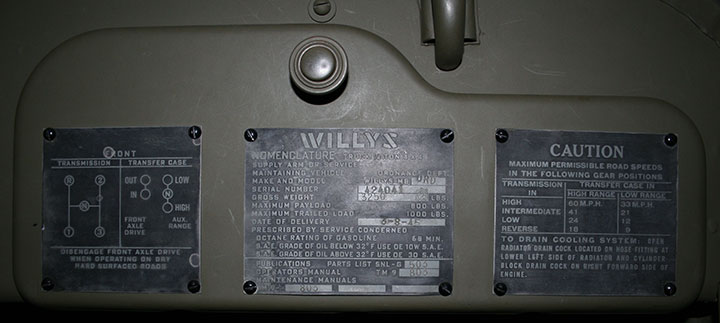
Serial Number 424041 delivered on 6-8-45.
Author's Photo.
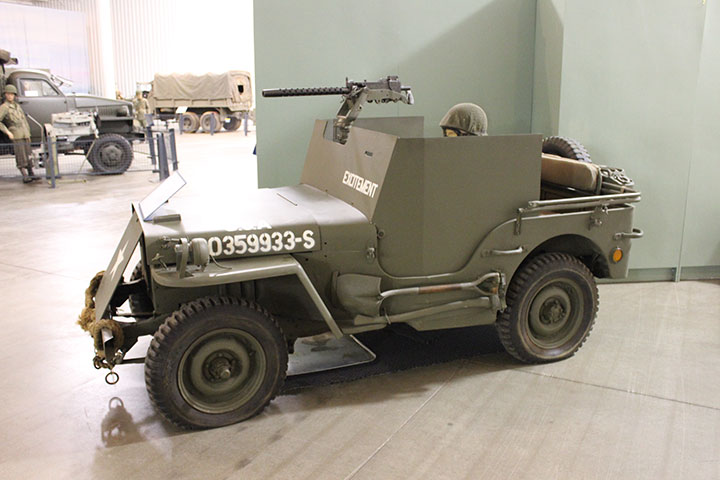
This Willys MB Jeep at the
National Military History Center in Auburn, IN has had 5/16 steel plate
added as armor. Author's Photo.
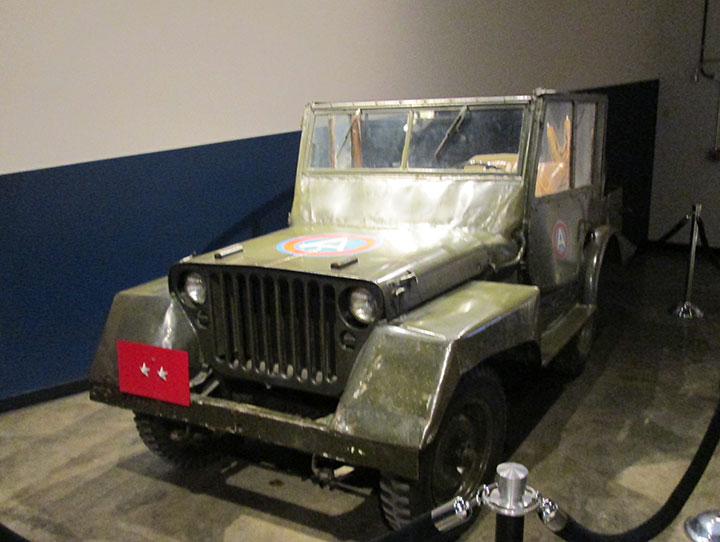
This Willys Jeep at the Patton Museum at
Fort Knox, KY was used by General George Patton to review the
troops. Author's Photo.
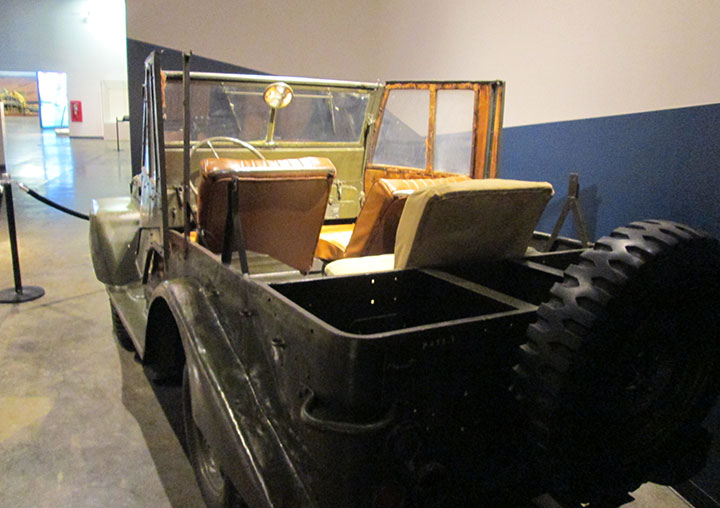
Author's Photo.
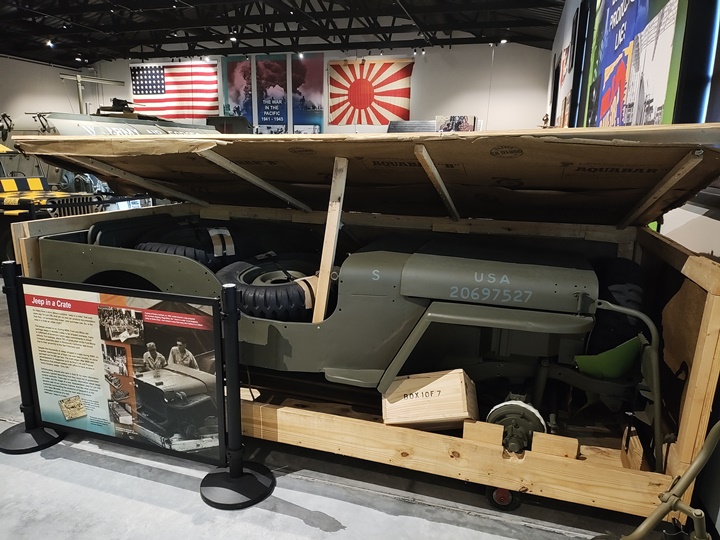
This display of a Willy-Overland-built
quarter ton truck in a packing crate is on display at the World War II
American Experience in Gettysburg, PA. It depicts how once the
Jeep was assembled and tested, it was then disassembled and packed for
shipment overseas. Once at its final destination the vehicle was
reassembled. Author's photo added 3-11-2025.
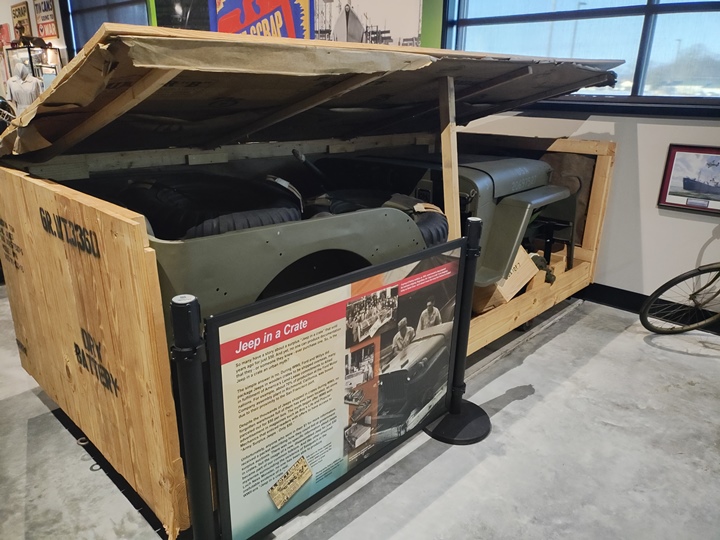
Author's photo added 3-11-2025.
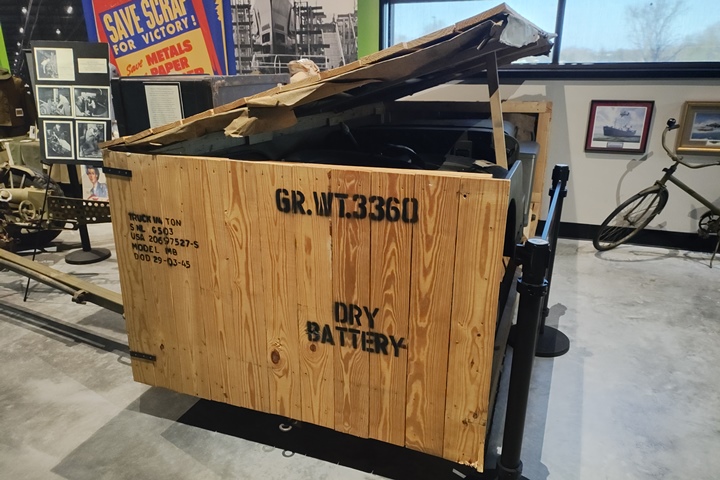
Author's photo added 3-11-2025.
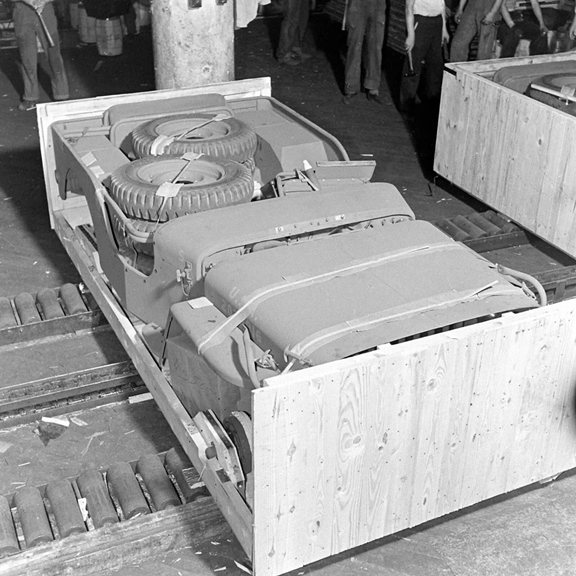
This World War Two photo shows that the
packing process took place on an assembly line. Image added 3-11-2025.
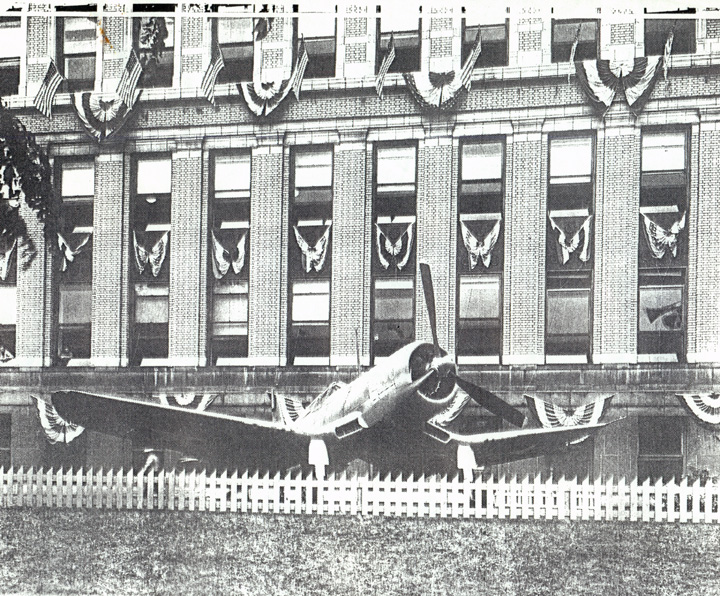
Because the company was building the center
section of the Vought F4U Corsair's wing during World War Two, one was trucked to the
plant and put on display for the employees to see. Photo courtesy
of Ron Szymanski.
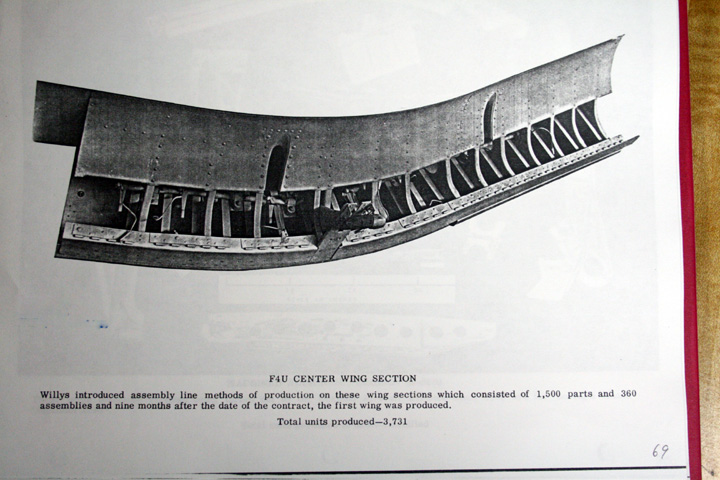
This section was extremely difficult to
manufacture due to the curvature and the 1,500 parts and 360 assemblies. Photo courtesy of Ron Szymanski.
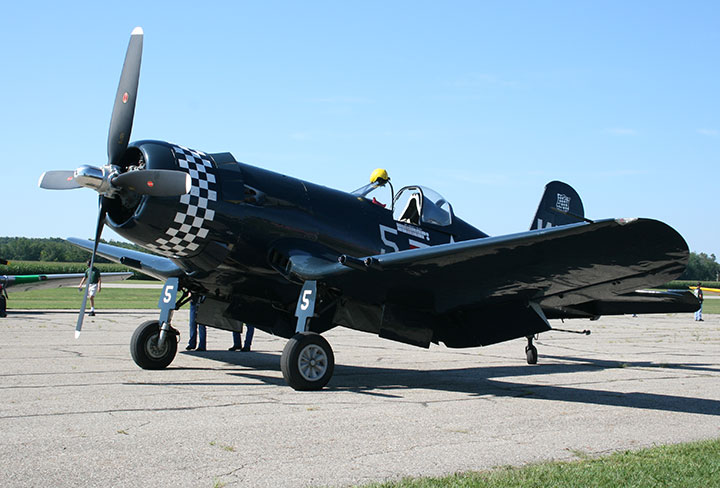
This photo shows the curved center section of the wing that
gave the F4U Corsair its distinctive look, as seen at the 2013 Hillsdale,
MI Airshow. Author's Photo.
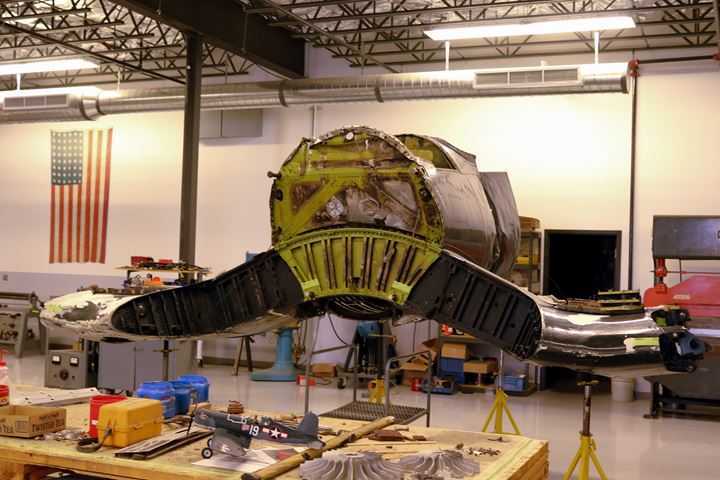
This Corsair under restoration shows the
complex curvature of the wing center section. Author's Photo added
10-10-2017.
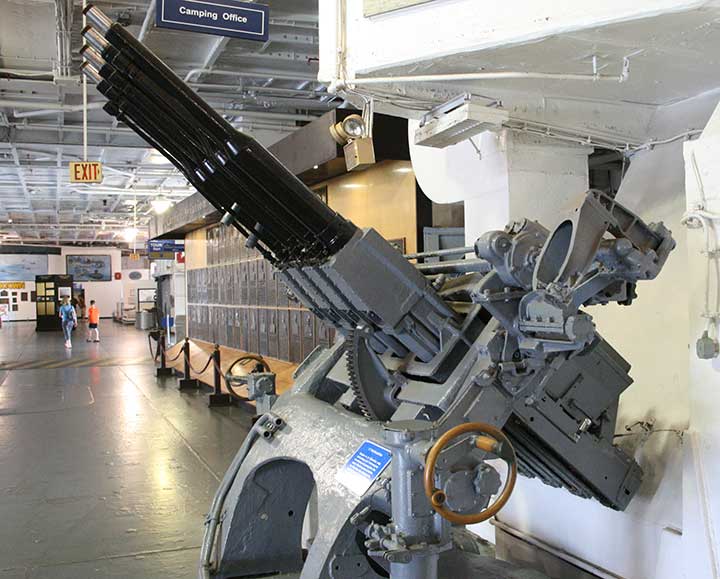
A 1.1-inch (28 mm) quad mount anti-aircraft
gun that was used by the US Navy during the first part of World War Two.
Prone to overheating and jamming if not properly maintained, the weapons
were replaced on US Navy ships later in the war by both the 20 mm Oerlikon and 40 mm Bofors cannons. Willys built 3,374 breach housings
and recoil cylinders for these weapons starting in 1941 and ending in
1943. As seen on the USS Yorktown at Patriots Point, SC.
Author's Photo.
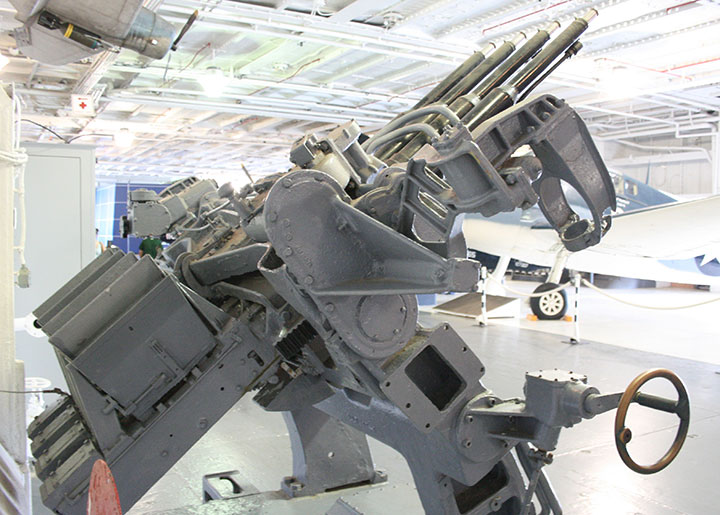
Author's Photo.
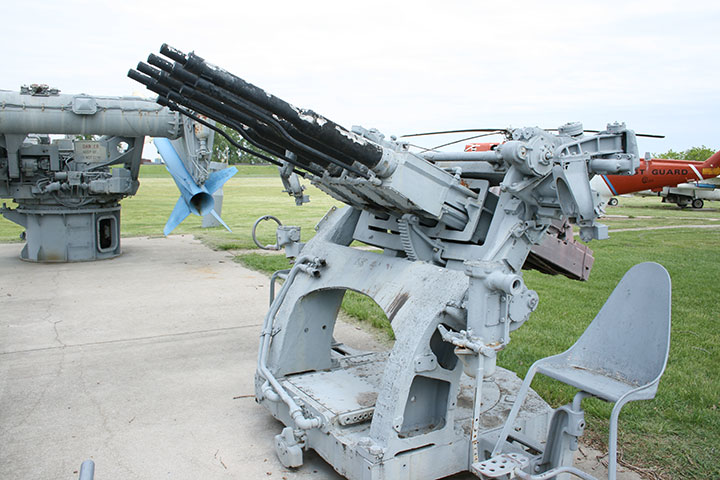
Here is another 1.1-inch quad mount
photographed in Freedom Park, Omaha, NB. This one has one of the
gunner's seats still attached. Author's Photo.
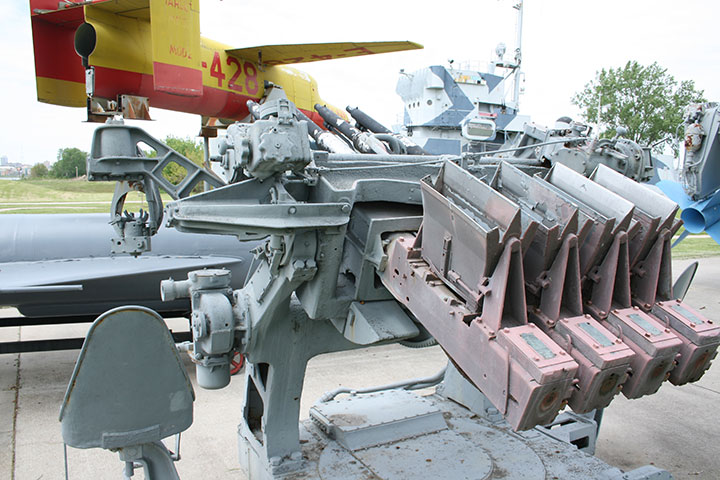
This photo gives a good view of the feed trays
for the 1.1-inch shells. Author's Photo.
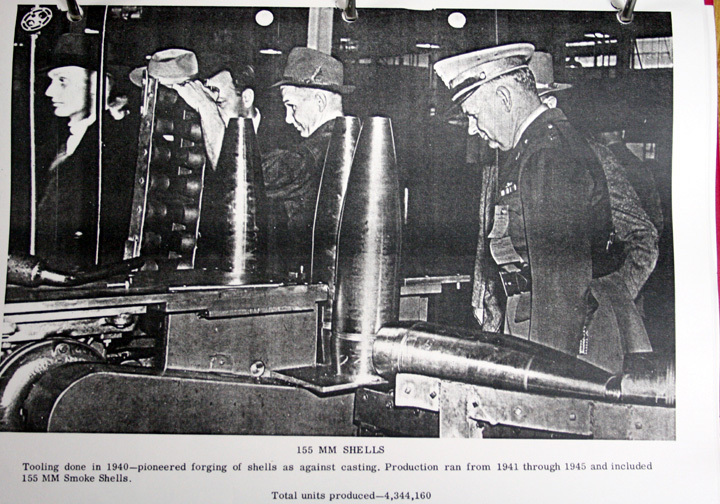
From 1941 to 1945,
Willys produced 4,344,160 of the 155mm shells as shown above. Smoke shells for the 155mm were developed by Willys in
1943.
Photo
courtesy of Ron Szymanski.
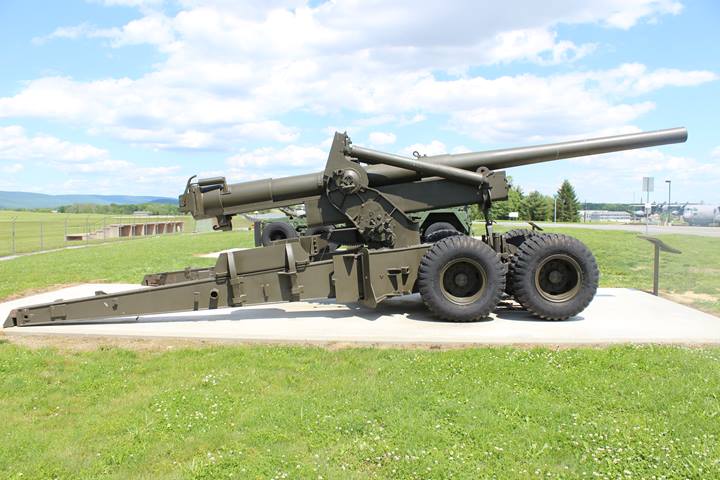
A 155mm cannon "Long Tom" like this one could hurl the 100-pound Willys-Overland-built
155mm shells up to 13.7 miles away. Author's Photo
added 10-10-2017.
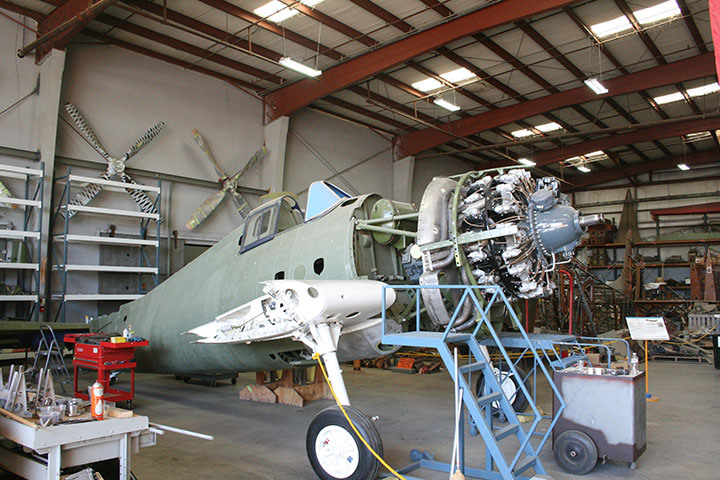
This Grumman F6F-3 Hellcat is under
restoration at the Yanks Air Museum in Chino, CA. Willys built
6,096 landing gears for this type of aircraft. Author's Photo.
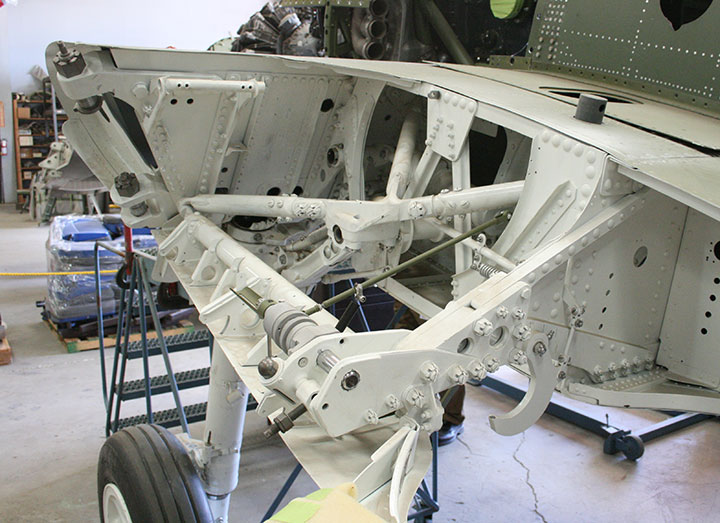
This photo shows the internal structure and
mechanism to retract the gear. The gear will be fully locked in
the up position when it rests on the hook in the foreground. The
Hellcat landing gear was robust in order to withstand the "controlled
crashes" that it made in landing on an aircraft carrier. The Navy
required that a Hellcat's landing gear at landing weight be able to
withstand a free drop of six feet. Grumman successfully tested the
aircraft to ten feet thereby exceeding the Navy's requirement.
Author's Photo.
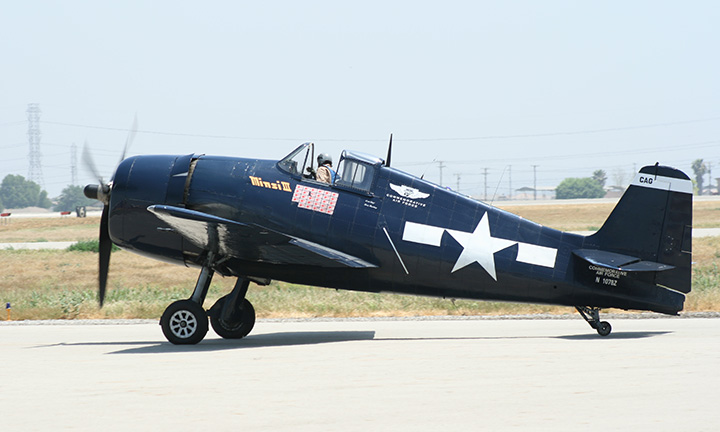
This Grumman F6F-5 Hellcat as seen at the 2009
Chino, CA Airshow. Grumman built 12,275 Hellcats during the war.
So, Willys provided a significant amount of landing gears for the aircraft.
The F6F created more Naval aces than any other aircraft during the
Second World War and was responsible for the destruction of more
Japanese aircraft that any other Allied fighter. Author's Photo.
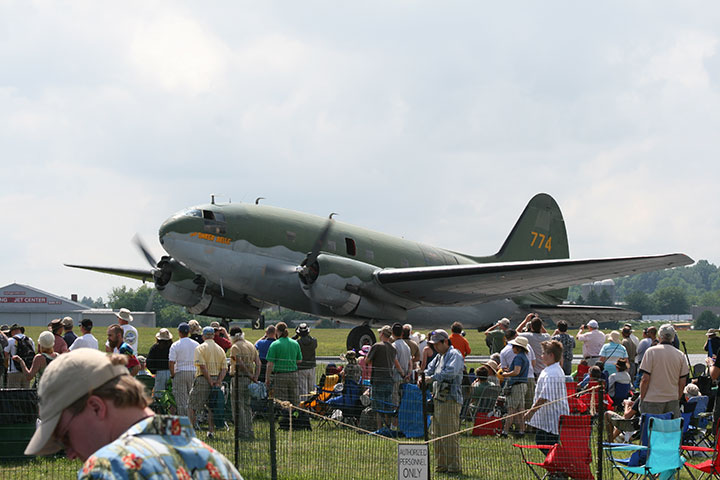
The Curtiss C-46 Commando was the largest
twin engine transport used by the US in World War Two. In 1945 Willys produced
3,065 fuel tanks for this aircraft. Each wing contained three tanks
that were twelve feet long and were outboard of the engines. This
C-46 was photographed at the 2013 World War Two Weekend in Reading, PA.
Author's Photo.
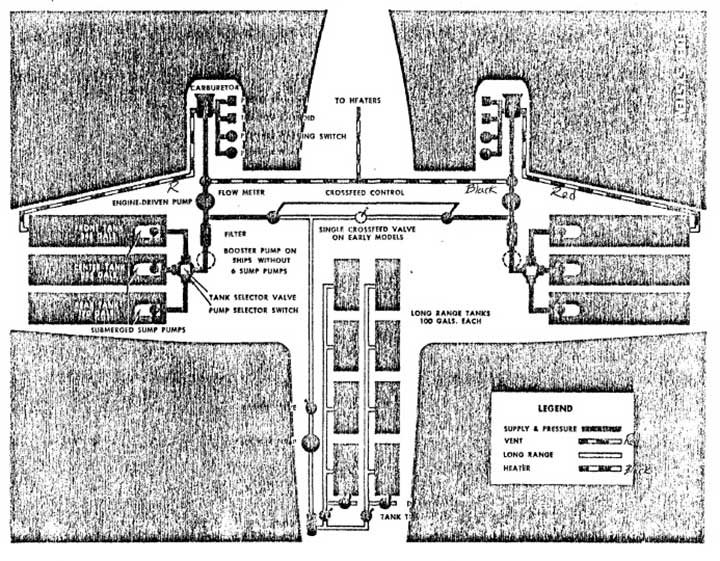
The front fuel tank had a capacity of 245
gallons, the center tank had a capacity of 285 gallons, and the rear
tank could hold 170 gallons, for 700 gallons per side, and a total capacity of
1,400 gallons. It is not known which of the three fuel tanks Willys-Overland built.
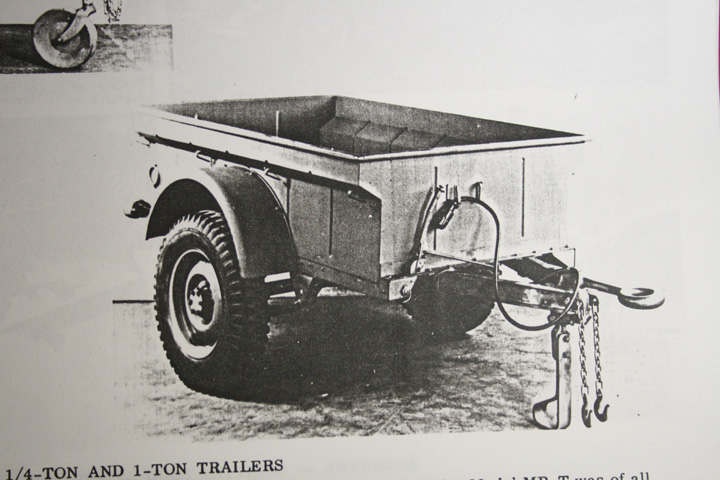
Photo courtesy of Ron Szymanski.
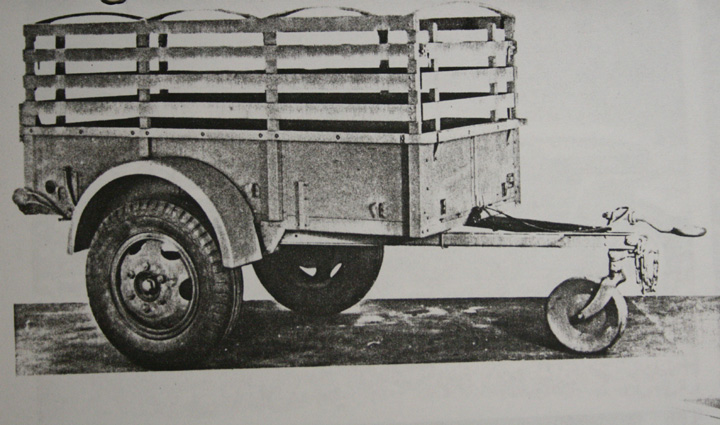
Photo courtesy of Ron Szymanski.
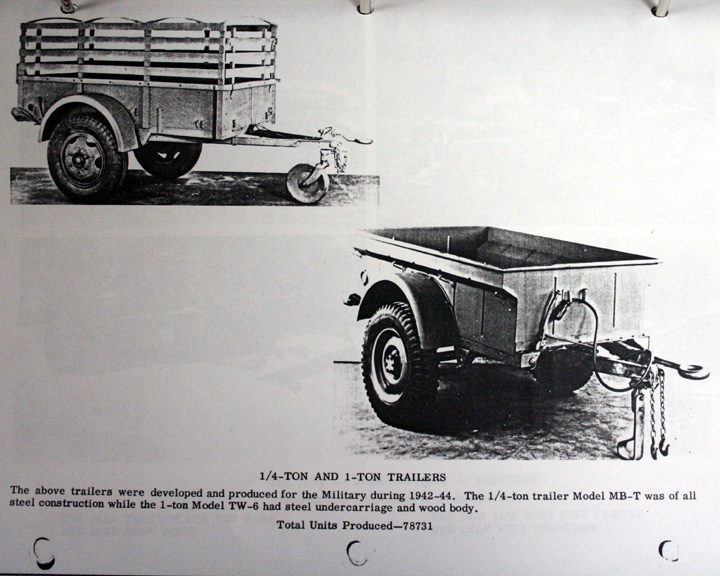
Photo courtesy of Ron Szymanski.
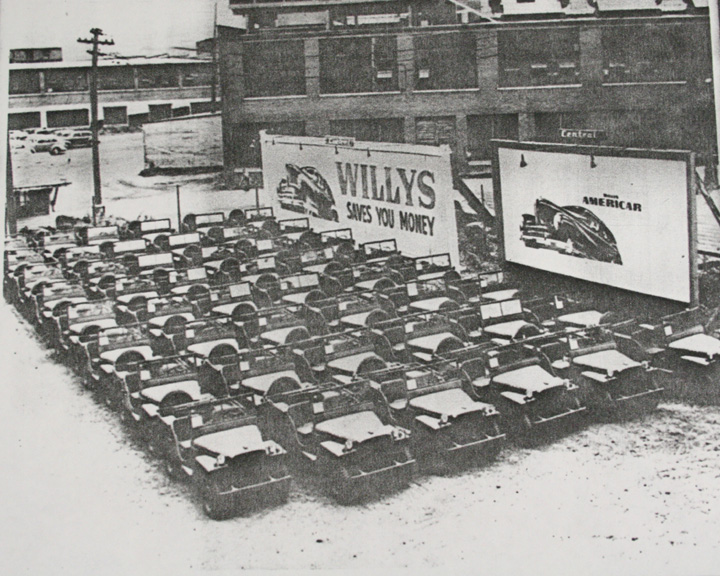
A shipment of MA model Jeeps is awaiting
transportation to the US military. Photo
courtesy of Ron Szymanski.
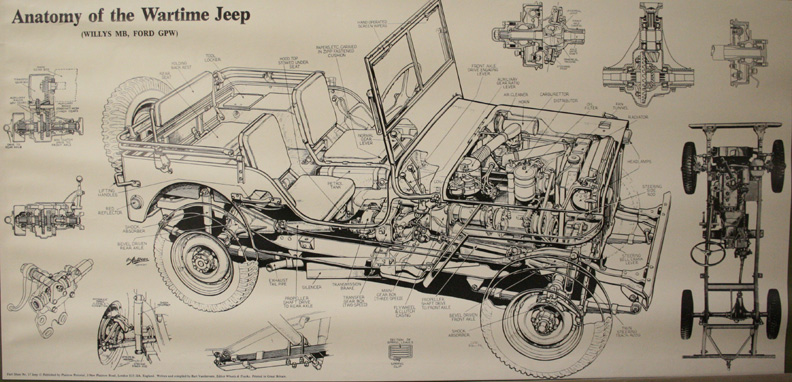
U.S. Army Signal Corps Power Plants with
Willys-Overland Engines: The company supplied the engine used
in the jeep for five different models of Signal Corps generators.
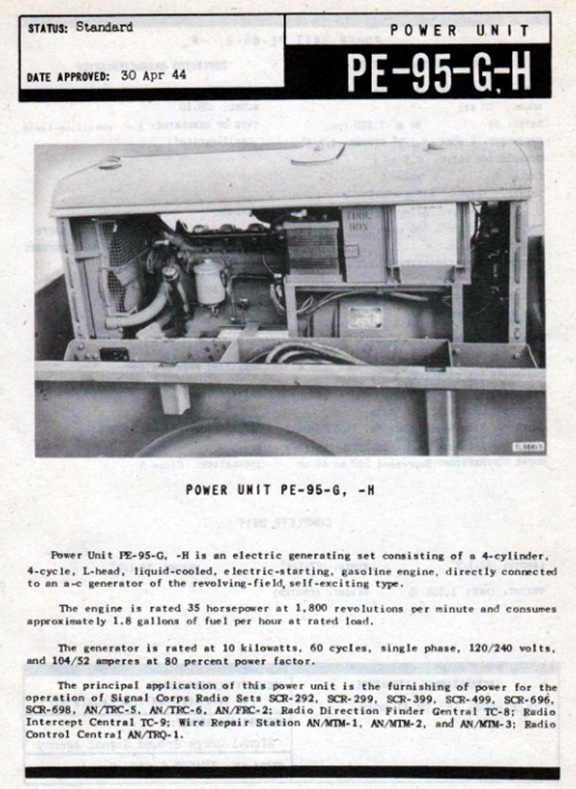
Image added 3-11-2025.
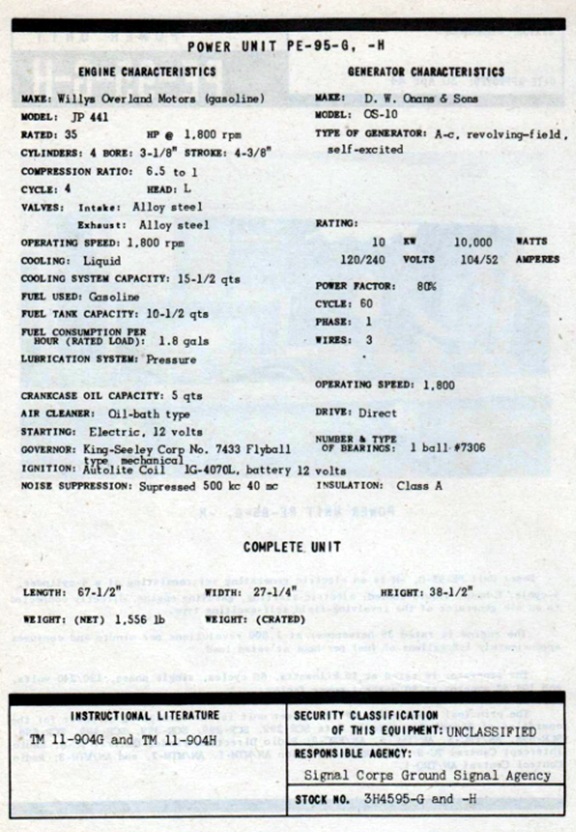
Image added 3-11-2025.
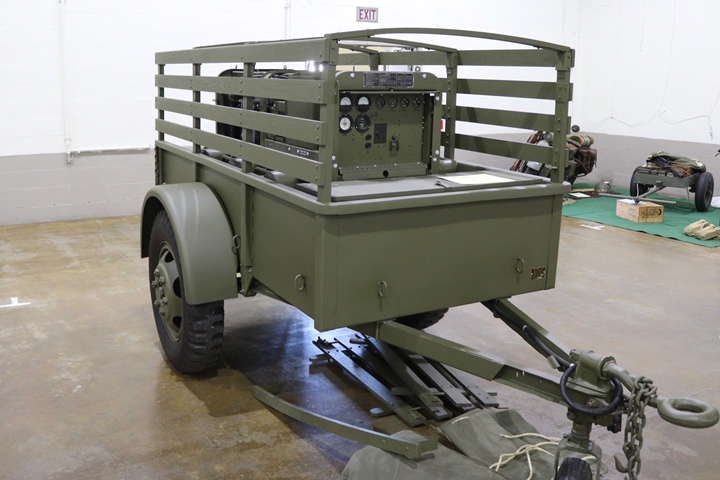
This O'Keefe & Merritt-built PE-95-K generator was
photographed at the 2019 MVPA National Convention in York, PA. It
is mounted in a Ben-Hur Mfg. Company-designed and built one-ton trailer.
Author's photo added 3-11-2025.
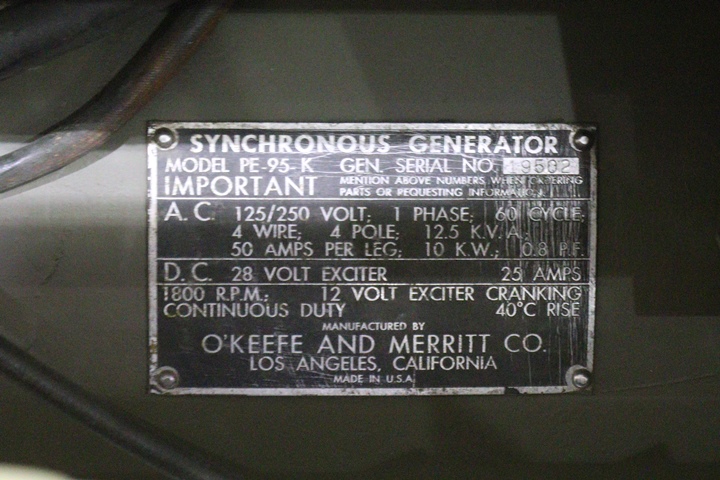
Author's photo added 3-11-2025.
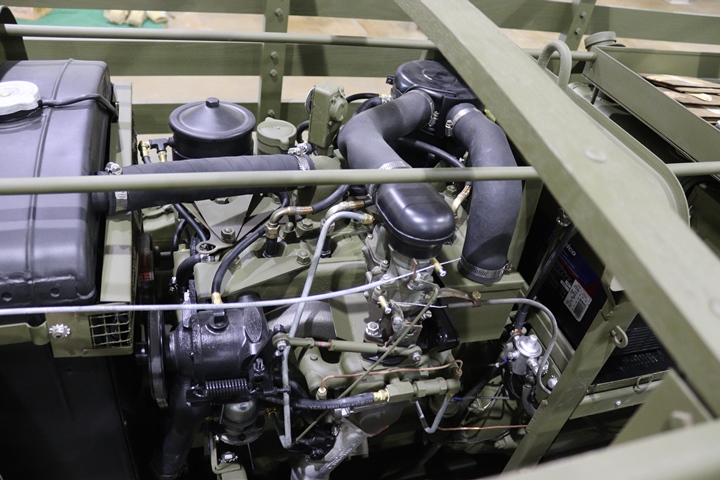
The gasoline engine is a Willys-Overland
JP-441. This is a version of the famous Willys-Overland "Go
Devil" World War Two jeep engine. Author's photo added
3-11-2025.
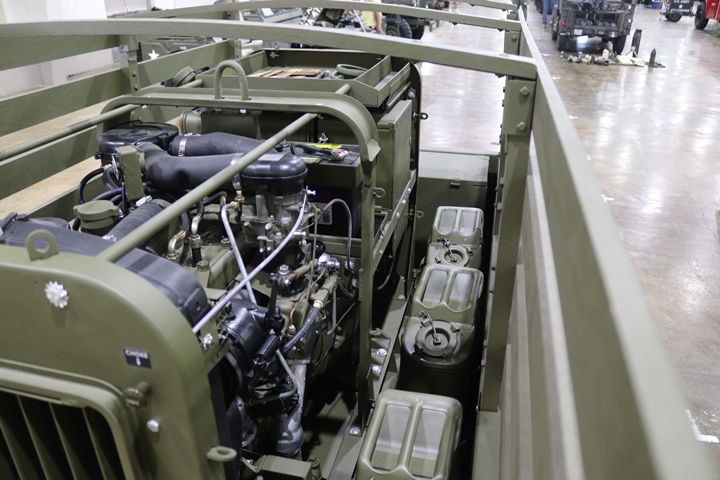
Author's photo added 3-11-2025.
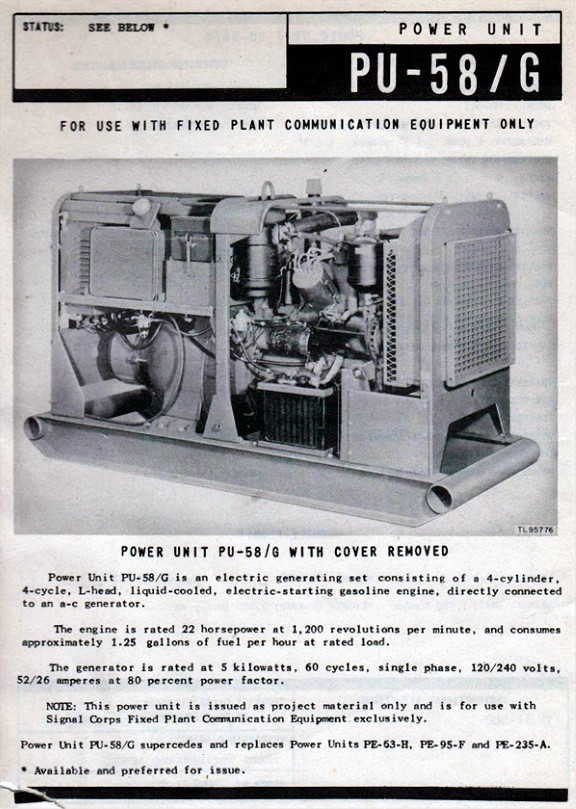
Image added 3-11-2025.
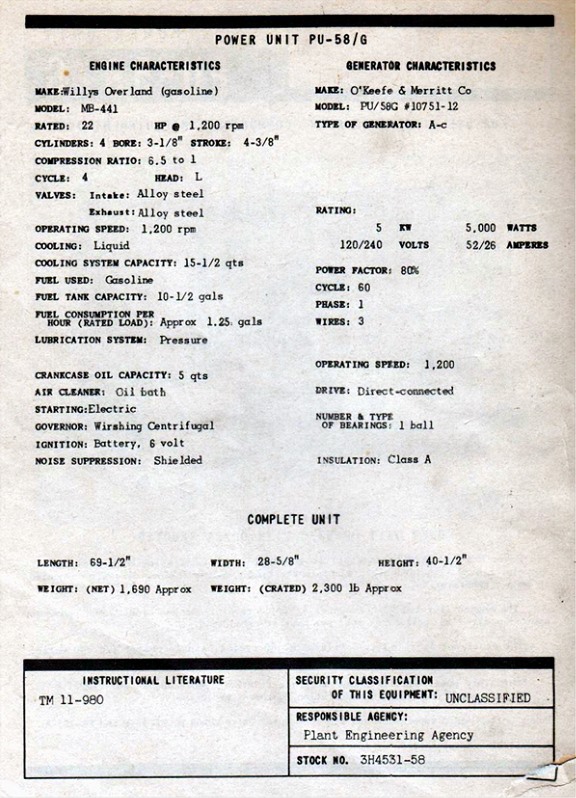
Image added 3-11-2025.
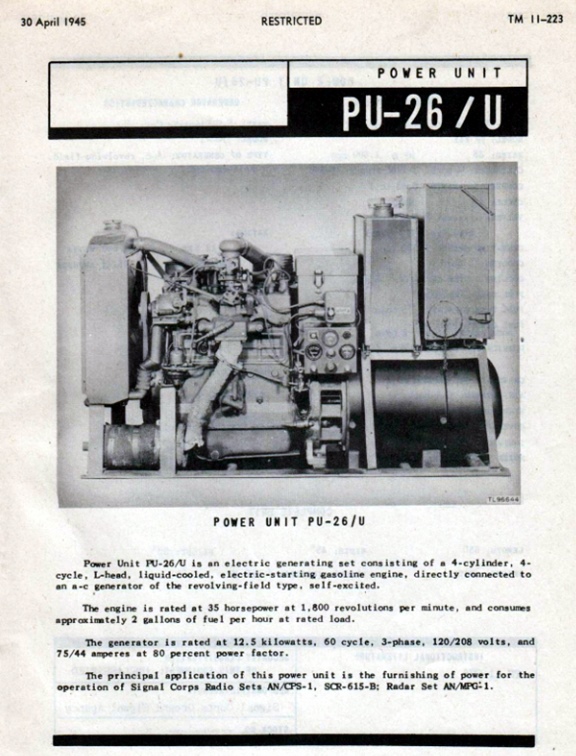
Image added 3-11-2025.
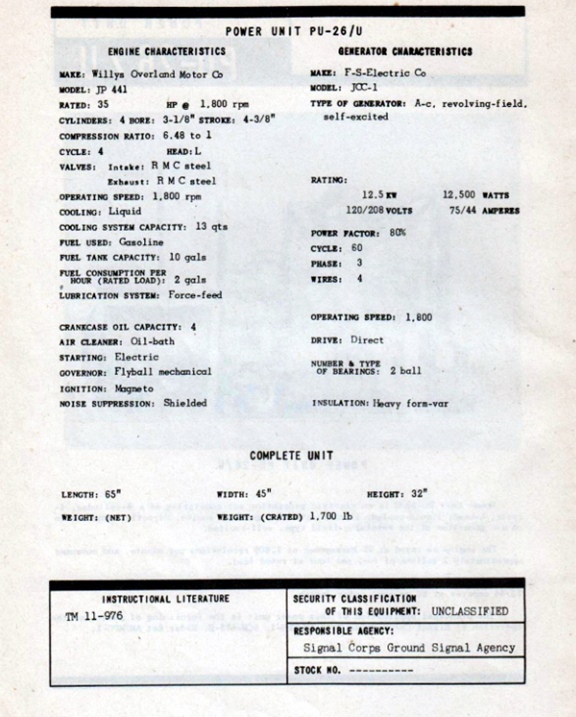
Image added 3-11-2025.
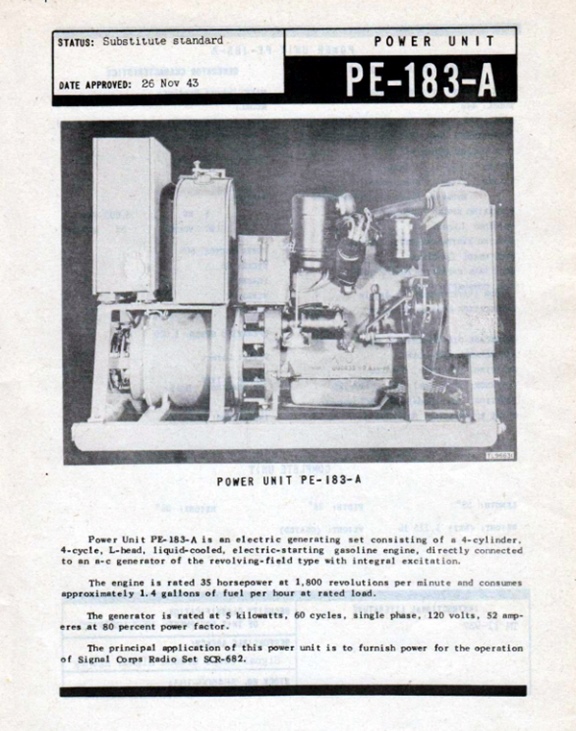
Image added 3-11-2025.
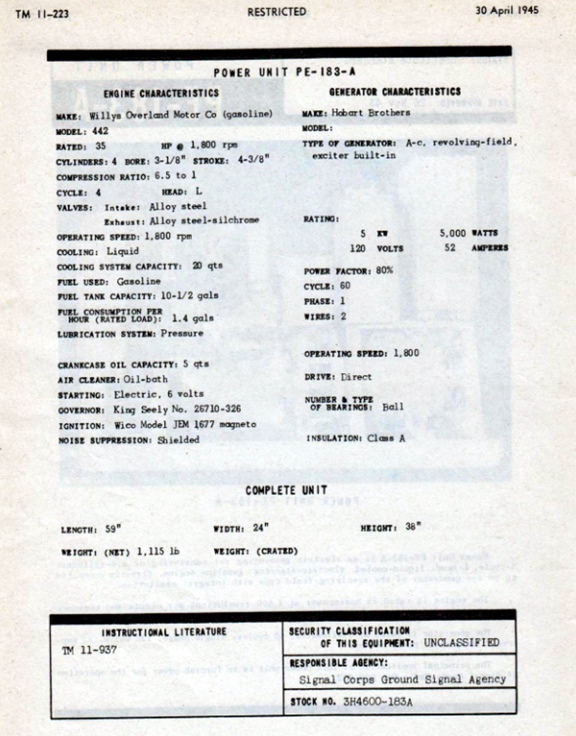
Image added 3-11-2025.
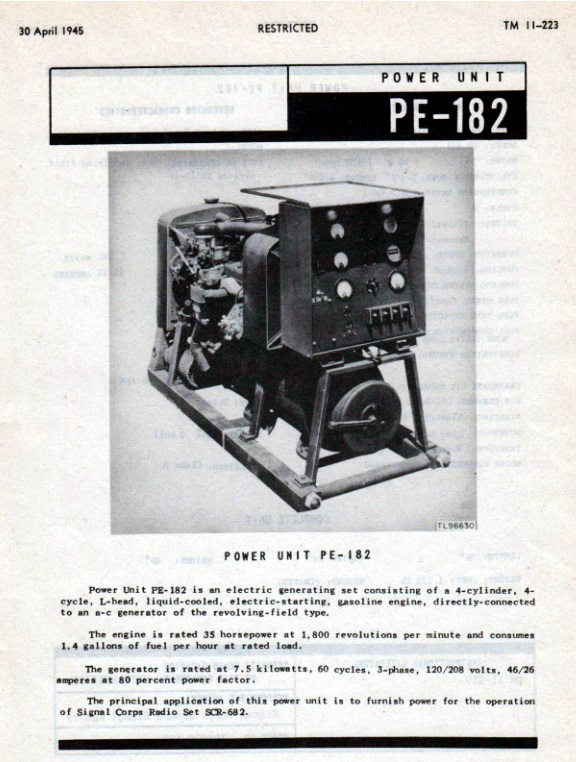
Image added 3-11-2025.
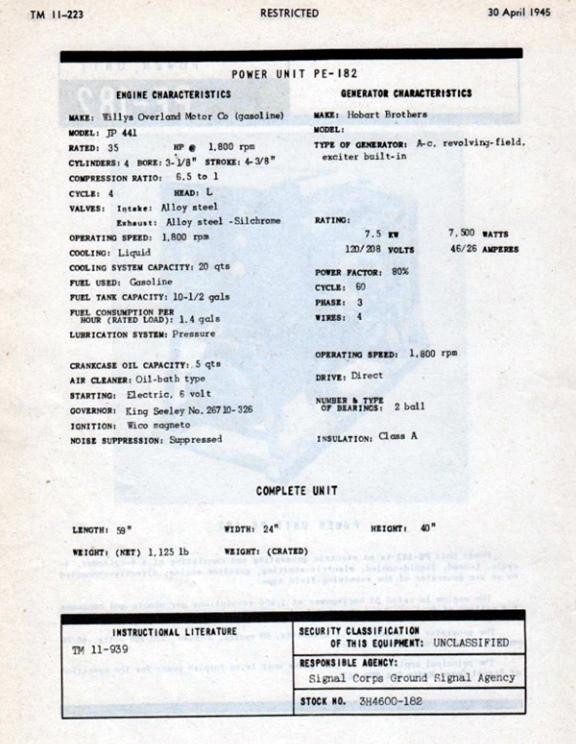
Image added 3-11-2025.
|











































































